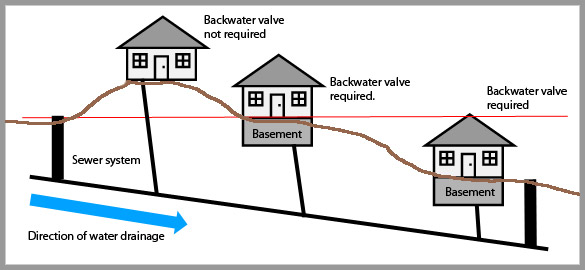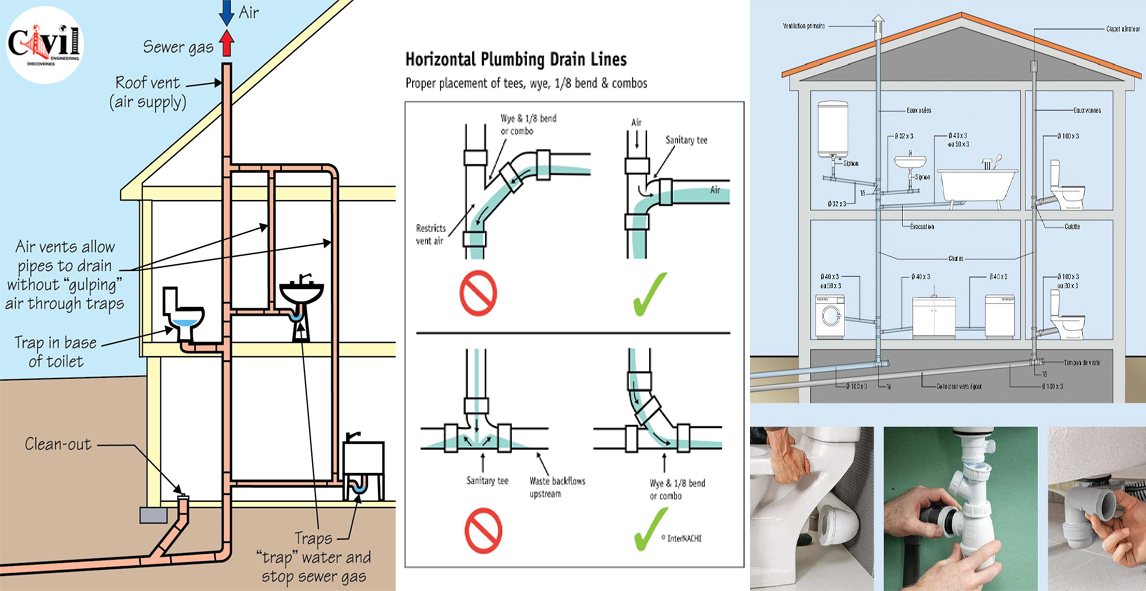This article below involving Plumbing Installation 101: All You Need to Know is relatively insightful. You should give it a look.

Comprehending exactly how your home's pipes system functions is necessary for each property owner. From delivering clean water for alcohol consumption, food preparation, and bathing to safely removing wastewater, a properly maintained plumbing system is important for your household's health and wellness and comfort. In this extensive guide, we'll explore the intricate network that makes up your home's plumbing and deal pointers on upkeep, upgrades, and managing typical problems.
Introduction
Your home's plumbing system is more than simply a network of pipelines; it's a complicated system that ensures you have accessibility to clean water and efficient wastewater elimination. Understanding its components and just how they collaborate can assist you stop expensive repairs and ensure every little thing runs smoothly.
Basic Components of a Pipes System
Pipelines and Tubing
At the heart of your plumbing system are the pipelines and tubes that bring water throughout your home. These can be made of numerous products such as copper, PVC, or PEX, each with its advantages in terms of longevity and cost-effectiveness.
Fixtures: Sinks, Toilets, Showers, and so on.
Fixtures like sinks, toilets, showers, and tubs are where water is used in your house. Understanding just how these fixtures attach to the plumbing system aids in diagnosing troubles and planning upgrades.
Shutoffs and Shut-off Points
Shutoffs control the circulation of water in your pipes system. Shut-off valves are crucial throughout emergencies or when you need to make repair services, enabling you to isolate parts of the system without interfering with water flow to the entire residence.
Supply Of Water System
Key Water Line
The main water line links your home to the municipal water system or an exclusive well. It's where water enters your home and is distributed to different components.
Water Meter and Pressure Regulator
The water meter procedures your water usage, while a stress regulator makes certain that water flows at a risk-free stress throughout your home's pipes system, avoiding damages to pipelines and fixtures.
Cold Water vs. Warm water Lines
Recognizing the distinction between cold water lines, which supply water straight from the main, and warm water lines, which carry warmed water from the water heater, assists in troubleshooting and planning for upgrades.
Water drainage System
Drain Pipeline and Traps
Drain pipelines lug wastewater away from sinks, showers, and toilets to the drain or septic system. Traps avoid sewer gases from entering your home and likewise catch debris that might create clogs.
Air flow Pipes
Ventilation pipelines enable air right into the drain system, protecting against suction that could slow down water drainage and cause traps to vacant. Correct ventilation is important for preserving the stability of your pipes system.
Relevance of Proper Drainage
Guaranteeing correct drain protects against backups and water damage. Consistently cleansing drains and maintaining catches can protect against costly repair work and expand the life of your pipes system.
Water Heating System
Kinds Of Hot Water Heater
Hot water heater can be tankless or traditional tank-style. Tankless heaters warm water as needed, while containers save heated water for immediate use.
Updating Your Pipes System
Factors for Updating
Upgrading to water-efficient fixtures or replacing old pipelines can boost water top quality, lower water costs, and raise the worth of your home.
Modern Pipes Technologies and Their Advantages
Explore technologies like smart leak detectors, water-saving bathrooms, and energy-efficient hot water heater that can conserve cash and lower ecological effect.
Expense Factors To Consider and ROI
Determine the ahead of time prices versus lasting financial savings when taking into consideration plumbing upgrades. Many upgrades pay for themselves through reduced utility bills and fewer repairs.
How Water Heaters Connect to the Plumbing System
Understanding how water heaters connect to both the cold water supply and hot water circulation lines aids in detecting concerns like not enough warm water or leakages.
Upkeep Tips for Water Heaters
On a regular basis purging your water heater to eliminate sediment, checking the temperature setups, and evaluating for leakages can prolong its lifespan and improve power performance.
Usual Pipes Problems
Leaks and Their Causes
Leakages can take place because of aging pipes, loose installations, or high water stress. Attending to leaks promptly prevents water damages and mold growth.
Obstructions and Clogs
Blockages in drains and toilets are usually brought on by purging non-flushable things or an accumulation of grease and hair. Making use of drain displays and being mindful of what drops your drains can prevent blockages.
Indicators of Plumbing Problems to Expect
Low tide pressure, slow drains pipes, foul odors, or uncommonly high water bills are indicators of possible pipes problems that need to be attended to quickly.
Pipes Upkeep Tips
Regular Examinations and Checks
Arrange annual pipes evaluations to capture problems early. Look for indicators of leaks, deterioration, or mineral build-up in faucets and showerheads.
Do It Yourself Maintenance Tasks
Straightforward jobs like cleaning tap aerators, checking for commode leaks making use of dye tablets, or shielding exposed pipelines in cool climates can stop significant plumbing problems.
When to Call an Expert Plumber
Know when a pipes issue needs professional competence. Attempting complicated repairs without appropriate knowledge can cause even more damage and greater repair work prices.
Tips for Reducing Water Use
Straightforward practices like taking care of leakages promptly, taking shorter showers, and running complete lots of washing and dishes can conserve water and lower your energy expenses.
Eco-Friendly Pipes Options
Consider sustainable pipes materials like bamboo for flooring, which is durable and green, or recycled glass for kitchen counters.
Emergency Preparedness
Actions to Take During a Plumbing Emergency situation
Know where your shut-off shutoffs are located and exactly how to switch off the water supply in case of a burst pipeline or significant leak.
Significance of Having Emergency Situation Calls Useful
Maintain call details for local plumbing technicians or emergency services readily offered for fast action throughout a plumbing crisis.
Environmental Influence and Preservation
Water-Saving Components and Home Appliances
Installing low-flow faucets, showerheads, and commodes can dramatically minimize water use without compromising performance.
Do It Yourself Emergency Situation Fixes (When Suitable).
Short-term fixes like making use of air duct tape to patch a leaking pipeline or positioning a container under a dripping tap can decrease damage until a specialist plumbing professional shows up.
Conclusion.
Recognizing the makeup of your home's plumbing system empowers you to keep it successfully, saving money and time on repair services. By adhering to routine maintenance regimens and remaining notified about modern-day plumbing modern technologies, you can guarantee your plumbing system runs effectively for years ahead.
Exploring Your Homes Plumbing Anatomy
Water Supply System
Main Water Line: This is where water enters your home from the municipal supply or a private well. Water Meter: Typically located near where the main water line enters the property, it measures the amount of water used. Shutoff Valve: It s crucial to know where this is in case of emergencies. It allows you to turn off the water supply to the entire house. Pipes and Fittings: These distribute water throughout your home. Materials can include copper, PVC, or PEX. Drain-Waste-Vent (DWV) System
Drains: Located in sinks, showers, and tubs, these carry wastewater away. Traps: U-shaped pipes under sinks that hold standing water, blocking sewer gases from entering the home. Vents: Pipes that lead from the DWV system to the outside, preventing vacuum formation and allowing gases to escape. Sewer Line: Carries all wastewater from the home to the municipal sewer system or a septic tank. Fixtures and Appliances
Sinks, Toilets, and Showers Dishwashers and Washing Machines Water Heaters Maintenance Tips
Regularly check for leaks in exposed pipes and around fixtures. Inspect the water heater annually for signs of wear. Clean drains and traps to prevent clogs and odors. Know how to shut off water to individual fixtures. When to Call a Professional
Major leaks or burst pipes Installation of new pipes or fixtures Septic tank issues Remodeling projects that involve plumbing changes Conclusion
Understanding the anatomy of your home's plumbing is key to maintaining a functional and efficient system. Regular checks and knowing when to call in the experts can save you time, money, and stress.
https://www.mavyn.com/blog/exploring-your-homes-plumbing-anatomy

As an enthusiastic person who reads about Anatomy of a House: Understanding the Components, I thought sharing that excerpt was really useful. Do you know about someone else who is curious about the subject? Be sure promote it. Many thanks for going through it.
Visit My Site